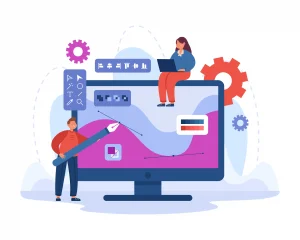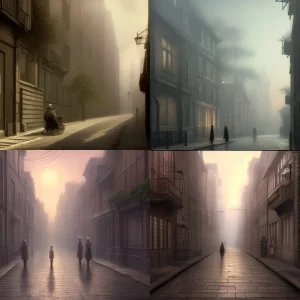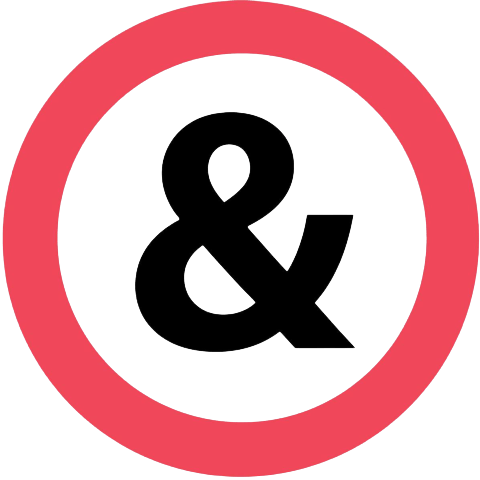If you’re not sure which type of graphic is right for your project, you’re not alone! Raster and vector images are two popular types of graphics used for a variety of projects, but it can be confusing to figure out which one is best for the job. In this blog post, we’ll discuss the comparison between raster image to vector images and when you should use one over the other. Read on to learn more!
Introduction to Raster and Vector Graphics
Raster graphics are composed of pixels, making them ideal for photographs or complex artwork. Vector images are composed of a mathematical formula, allowing for greater flexibility, scalability, and resolution independence. When deciding between vector and raster graphics, it is important to consider the type of artwork being created. Vector is ideal for logos, illustrations, drawings, or other artwork that involves shapes, lines, and curves. Raster graphics are better suited for photographs, paintings, or complex images with several colors. When graphics include both vector and raster elements, it is important to make sure that the two formats are compatible with each other.
Vector graphics use mathematical formulas to create smooth lines and curves that can be scaled infinitely without losing quality. Graphic designing often requires raster to vector conversion so that images can be scaled without any loss of detail. This raster-to-vector conversion process is an important part of the graphic design workflow and is often used to create logos or other designs that need to remain sharp at different sizes. Vector graphics provide a wealth of options for graphic designers, allowing them to create designs that stand out from the competition.
Combining both types of graphics can create unique and powerful visual designs that stand out from the competition Again, the combination of vector images and raster graphics in graphic design can create compelling visual designs that will stand out from the competition. Vector images, such as shapes and lines, allow for smooth curves and crisp edges to be added to materials, while raster graphics provide a detailed level of depth to images that can’t be achieved with vector images alone. Utilizing both types of graphics can help designers create innovative designs that are sure to catch the eye.
What is Raster Graphics?
Raster graphics are made up of a grid of colored pixels and are used to create digital photographs, web graphics, and other digital images. For graphic designers to make the most of this format, converting raster to vector is a key skill.
Vector graphics use points, lines, and curves to create images that can be scaled and manipulated without pixelation or distortion. Once converted to vector, images can be easily manipulated, resized, recolored, and transformed with little effort. Graphic designers should be able to complete this conversion process quickly and accurately in order to deliver the best results for their clients.
Because they are composed of a finite number of pixels, they cannot be scaled to larger sizes without losing image quality. Graphic designing involves the manipulation of visual elements such as color, type, line, and texture to create a composition that conveys the desired result. Because of the technical limitations of graphic design, the elements must be carefully crafted in order to maximize their visual impact without losing image quality. Therefore, experienced graphic designers must possess an understanding of color theory, typography, and composition principles in order to create effective visuals.
Raster graphics can be edited using image editing software such as Photoshop or GIMP to adjust brightness, contrast, color balance, etc similarly, raster graphics can be converted to vector graphics using raster-to-vector conversion software. This process is useful when you need to rescale raster images or create more detailed artwork. It is also beneficial for creating scalable logos and other design elements that require higher resolution than raster images can provide. This conversion process is a key element of graphic designing and provides an invaluable tool for creating high-resolution artwork.

What is Vector Graphics?
Vector graphics are digital images that are created using mathematical equations and geometric shapes. They are popular in the field of graphic design due to their scalability, versatility, and easy editing. Vector graphic images can be created or edited using software such as Adobe Illustrator, CorelDraw, and Inkscape. Vector graphics are widely used for logos and illustrations as well as for creating charts, diagrams, and animations. Because vector graphics are resolution-independent, they can be used for both print and digital media without losing quality or clarity. Thanks to vector graphics, graphic designers have a powerful tool to create stunning visual designs with ease.
Vector graphics can be easily scaled and manipulated without compromising image quality, unlike traditional raster graphics. This makes vector graphics incredibly popular amongst designers, especially when a raster-to-vector convert of raster images is needed. Graphic design services frequently use vector graphics to provide clients with a flexible and clean look for their projects. Additionally, raster-to-vector conversion is necessary for digital printing and other types of large-format printing where a high-quality resolution is required. Vector graphics are truly versatile and are used in a wide variety of digital media.
Vector graphics are widely used in graphic design, illustrations, logos, and animation next, converting raster to vector is a popular format used in graphic design today. Vector graphics allow for more dynamic illustrations and better-quality animation as compared to raster images. It is a unique type of file that has been integral to the success of the graphic design, logos, and illustrations. Vector graphics are widely used in design for their flexibility and ability to be scaled without any loss of resolution.
Comparing Raster and Vector Graphics
Raster graphics are composed of pixels, making them ideal for photographs and other types of images with lots of detail. However, raster graphics are not the ideal choice for logos and web designs. This is because raster images lose their quality when they are resized or zoomed in/out. That’s where raster-to vector conversions come in; vector graphics are composed of lines and can be resized without losing quality. Vector graphics are ideal for logos, web designs, or any other type of graphic design that requires scalability and sharpness.
Vector graphics, on the other hand, are composed of lines and curves, making them perfect for logos and other types of vector illustrations. Graphic designing often involves raster to vector conversion, which is the process of changing raster graphics into vector formats. This conversion can be done with raster-based software, in order to create a format that is more easily viewed and edited on a variety of applications. Vector graphics are typically saved as either EPS or SVG files, both of which are great for creating logos and icons with sharp edges and clean lines. Vector graphics offer more flexibility than raster graphics, which makes them an ideal choice for graphic designers and illustrators.
Understanding the differences between these two types of graphics is essential for creating effective graphic design projects, However, raster to vector conversions are essential when it comes to graphic designing. Understanding the differences between raster and vector graphics is essential in order to create effective graphic design projects. Knowing how raster graphics differ from vector graphics in terms of resolution, image quality, and file size can help graphic designers in their workflows, resulting in projects that are functional, efficient, and aesthetically pleasing.
Selecting the Right Graphic for Your Project
It’s important to select a graphic that reflects the message and tone of your project. Graphic design is an art form that is both creative and technical. Whether designing a logo, brochure, poster, or website, selecting the right image and raster to vector conversion can be essential to the success of your project. Raster-to-vector conversion involves transforming raster (bitmap) images into vector images that are more durable and flexible. This allows you to make quick edits such as color and size adjustments without losing any quality or resolution.
You should also consider how the graphic will work with the rest of the design elements in your project. This is a crucial part of graphic design, as it ensures a cohesive look for your project. Pay attention to the colors you choose, the type of fonts used, and any other design elements that fit into your project. All of these elements should work together towards creating a unified aesthetic that effectively conveys your message or tells your story. With careful planning and consideration, you can create a visually stunning graphic design that stands out from the rest.
Additionally, make sure to use high-quality graphics so that it looks professional and polished finally, when it comes to graphic design, make sure to use high-quality graphics so that the final product looks professional and polished. If you are looking to layer images and create a 3D look, vector images are best used due to their scalability whereas raster images are ideal for photographs. Both types of graphics are important in graphic design so be sure to choose the best one for each project.
Tips for Making the Most of Your Graphic Design
Start off by researching your target audience and understanding what they respond to visually. When it comes to graphic design, one of the first decisions that need to be made is the choice between a vector image and a raster image. Vector images are composed of lines, shapes, and curves, while raster images are made up of pixels. As different audiences will have different preferences, it is important to have an idea of what type of graphic design will work best for your target audience. Additionally, you should also consider how the particular type of graphic design would fit into the overall look and feel you’re trying to achieve with your message.
Create a cohesive color palette that reflects the mood you want to create with your design. Graphic design involves raster-to-vector conversions, manipulating images and typography, and creating compelling visuals for various applications. Knowing how to effectively use raster-to-vector conversions is crucial for graphic designers, as this process enables them to create sharper lines and cleaner curves than raster images can provide. Having a strong understanding of color theory is also essential for effective graphic design since colors can evoke different emotional responses from viewers. Experienced designers know how to combine colors and shapes to create designs that convey precisely the desired message.
Experiment with different typography styles and layouts to create a unique look and feel for your design All in all, graphic design is an art form that allows you to be creative and inventive with the visuals you create. Experimenting with typography styles, layouts, vector images, and raster images is integral for creating a unique look and feel for your design. Graphic design doesn’t have to be restricted to any certain rules or guidelines; it can be whatever you make of it. With the right resources and techniques, you can create stunning visuals in no time.
To Conclude
In conclusion, both raster and vector graphics have their own unique advantages and disadvantages, and it can be tricky to decide which one is the best choice for your project. Fortunately, with a little bit of knowledge about the two graphic types, you can make an informed decision about which one is right for your project. Knowing the differences between raster and vector graphics will help you make an informed choice when picking the graphic to use for your next creative endeavour.




